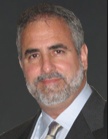 QUICK HIT CORE CONCEPTS
***Mortality in trauma increases dramatically with increased age, inc 7% mortality for each year over 65 in trauma ***Liver disease is the worst premorbid condition for trauma ***Standard trauma assessment is inadequate in elderly, particularly vital signs insensitive ***Falls: 10% significant injury, in geraitric population cervical spine fractures common ***Have decreased cardiac output, may not be able to mount adequate tachycardic response, may have occult shock. Have consideration for peri-traumatic MI both prior to trauma or stress of trauma causing MI ***Pulmonary issues: Decreased reserve, increased risk ARDS and atelectasis, CO2 narcosis ***CNS: High risk of subdural, clouded by questionable baseline mental status ***Renal: Often baseline poor GFR, CT Contrast can cause significant injury ***Trauma triage poor in elderly: Age >55 should be at a trauma center ***CMC TRAUMA ACTIVATION for geriatrics ATC 1:: Age >65: HR>100, SBP<110 ALERT:: Age >65 involved in MVC or fall from height ***MANAGEMENT Airway: Increased aspiration risk. Consider dentures. Consider high cervical spine risk and maintain proper imobilization. Consider increased response to induction agents: decreased your dose. Breathing: Decreased reserved, rapid desaturation. Use passive oxygenation. Use ETCO2. Consider increased risk of rib fractures. Circulation: Decreased response to catechols, on beta blockers; may not mount tachycardia appropriately. Consider RELATIVE hypotension. --Journal trauma study shows HR >90 and SBP <110 significant increased in mortality Disability: Central cord syndrome more common in elderly, may have "Hand burning", will have upper extremity weakness and capelike paresthesia ***SHOCK INDEX HR/Systolic blood pressure Normal less than 0.6, realistic threshold <0.8 More sensitive than HR or BP alone Even better: Shock index * Age should be <50 ***If concerned about fluids, use repeated small boluses (250ml) ***Anemia: Follow serial hemoglobins and transfuse early. Transfusion threshold controversial, starting thinking about it around 8 or persistent hypotension ***History: Keep in mind precipitating events, syncope in 10-15% of geriatric fall/MVC ***Identify blood thinner use!! Coumadin, plavix, ASA, Anti 10A, anti thrombin ***CAREFUL chest exam: Must identify rib fractures, flail chest; XRAY low sensitivity for these. Traumatic aortic dissection often does not have external signs of injury. ***Abdomen: Geriatric may NOT develop peritonitis despite significant intraabdominal injury ***LABS: Always get lactate; highly predictive of bad outcome >2 admit, >3 ICU, >4 call chaplain. (40% mortality in lact >4) Upgrade to ATC 2 if INR >2 or Lactate >2.5 ***ECG Routine in geriatric trauma ***Careful with opiates in elderly, start low doses ***Head trauma: 80% mortality if GCS<8 Any anticoagulation with head trauma = scan ***Anticoag reverse> Coumadin, see protocol Antithrombin: May try FFP but pretty much screwed Anti Xa: PCCC may be beneficial (see protocol for dosing) ***Rib fractures: Risk of atelectasis, resp faulire, pneumonia Admit if >3 rib fx. Consult if 1 or more if frail, live alone, any concern really ***Elderly aorta Eggshell appearance distant from border of aorta may indicate dissection (Egg shell or Halo sign) ***Pelvic fx mortality 50% if hypotension, 90% if open. Eval for hemoperitoneum and aortic rupture ***Burns.. Baux index: Mortality = age + TBSA. Age >50 with bad burns, = burn center **BEWARE Cold and quiet, elderly trauma patient!
0 Comments
Your comment will be posted after it is approved.
Leave a Reply. |
Archives
August 2018
Categories
All
|
 RSS Feed
RSS Feed
